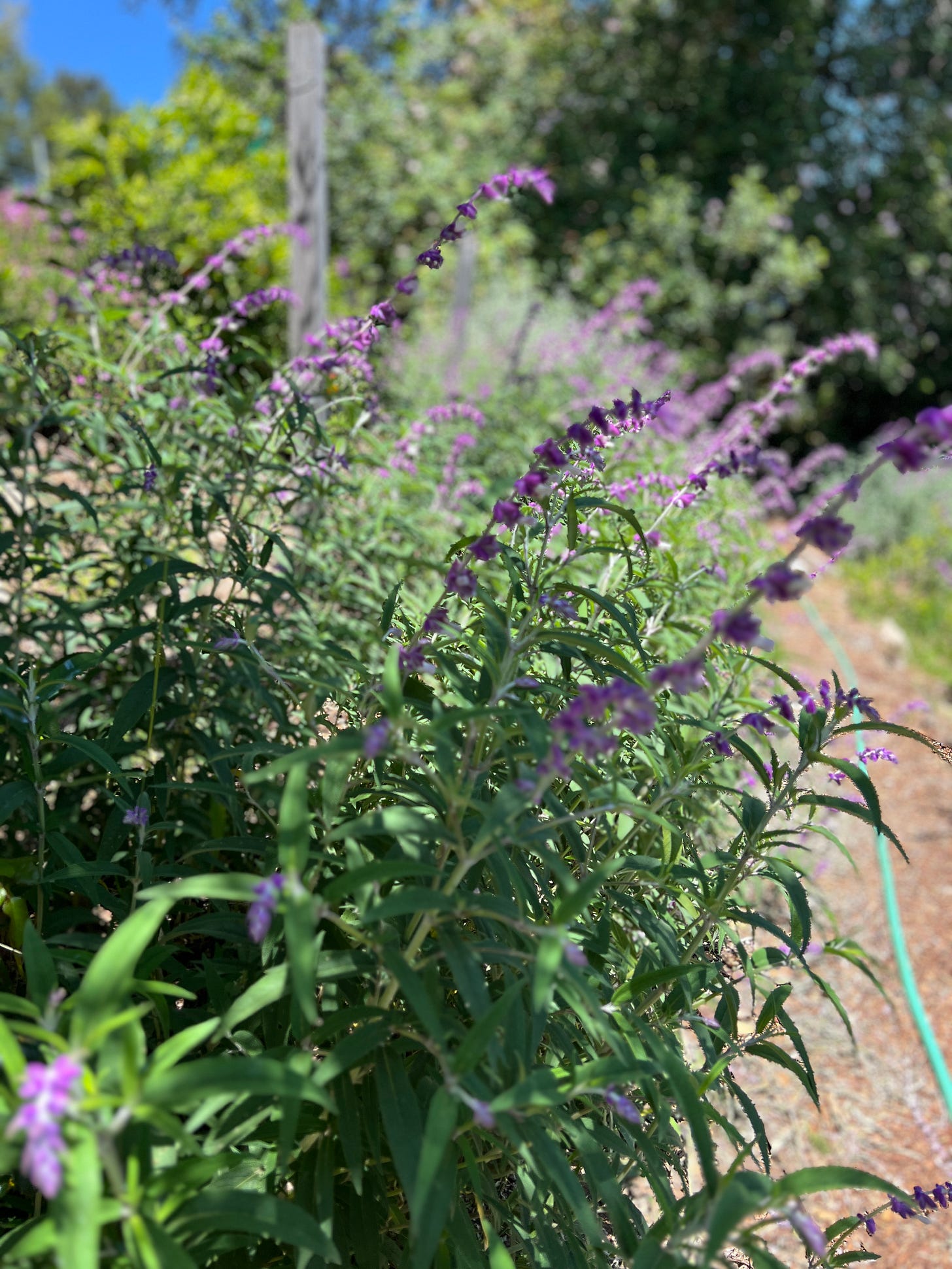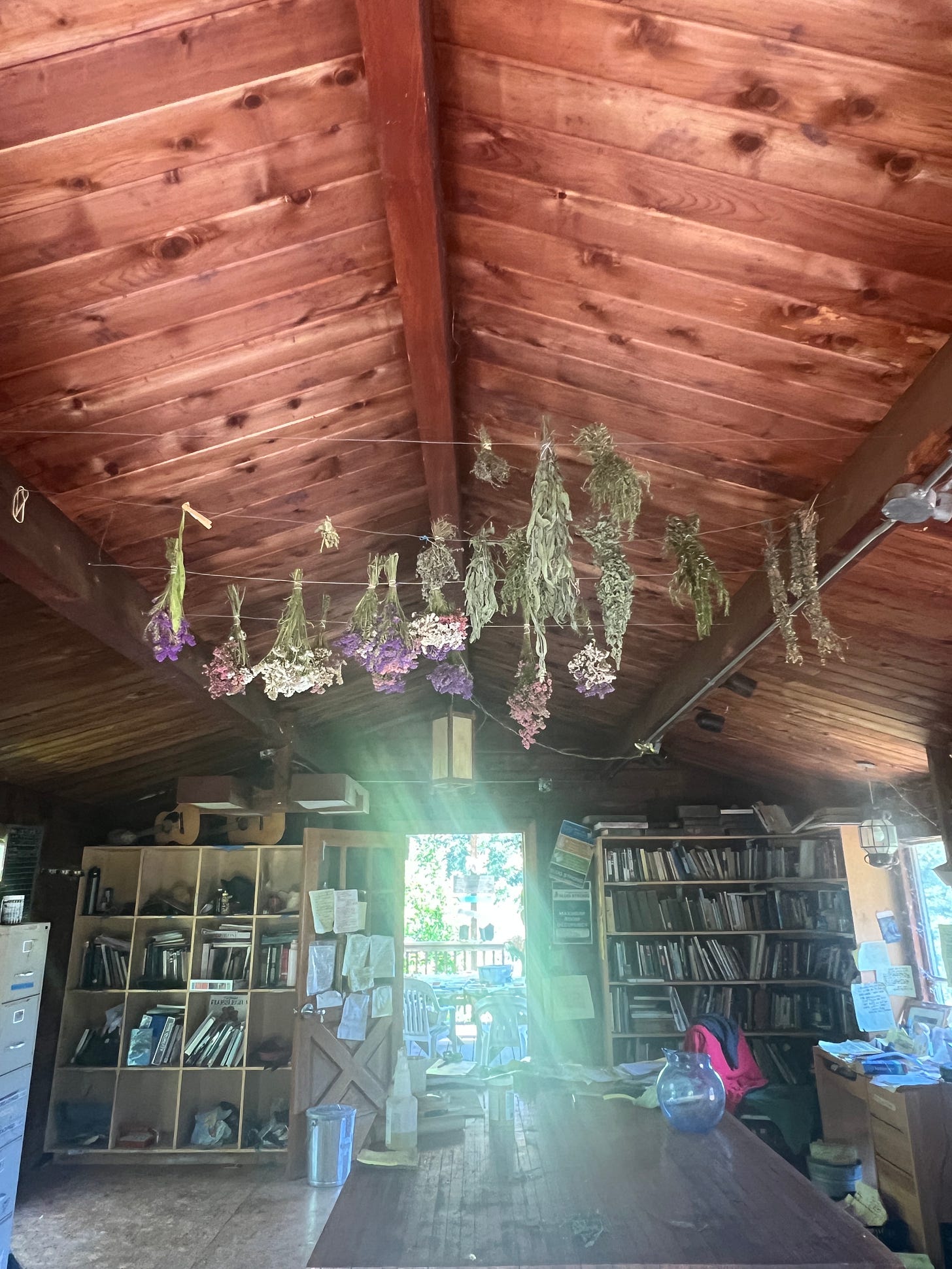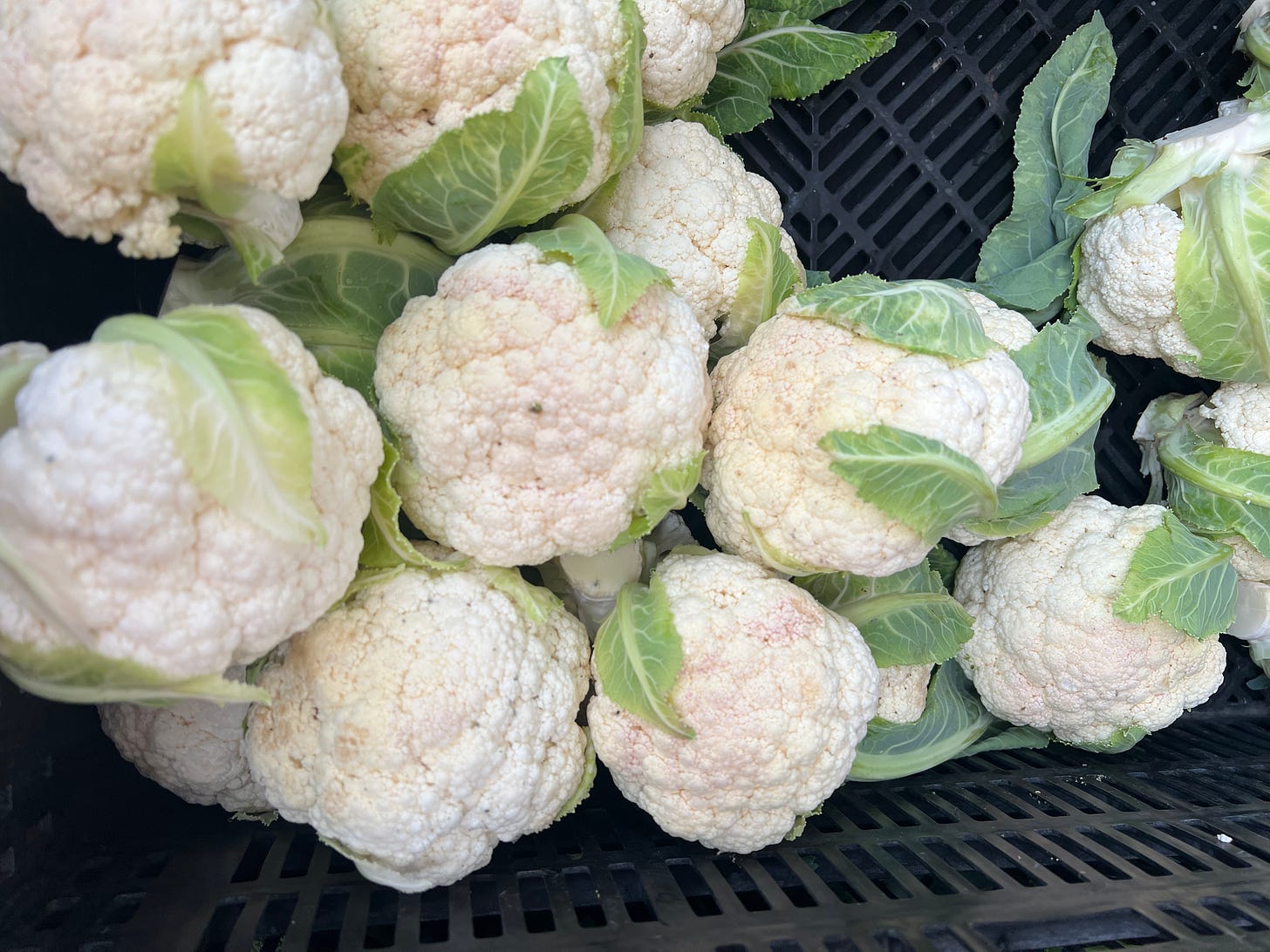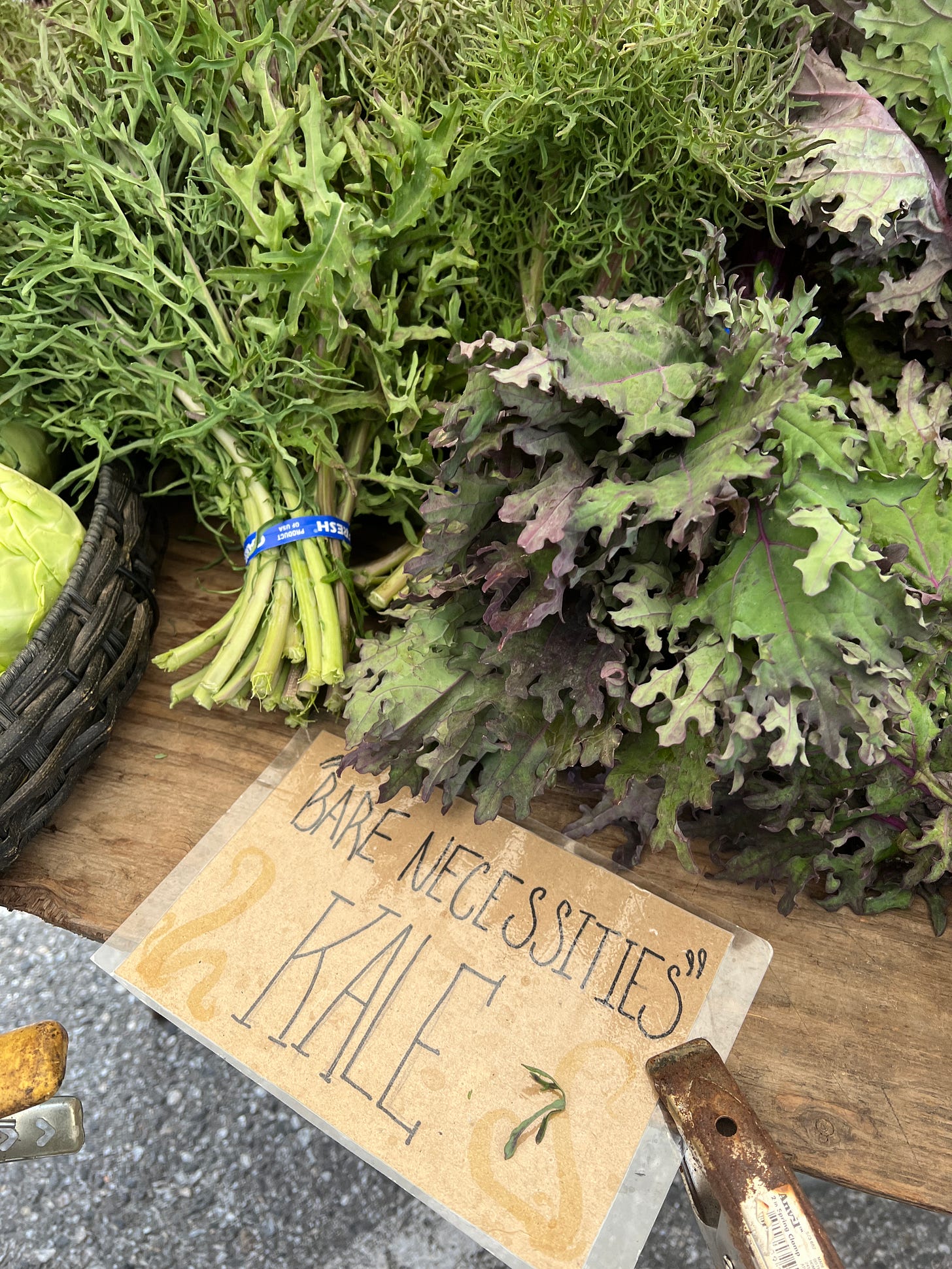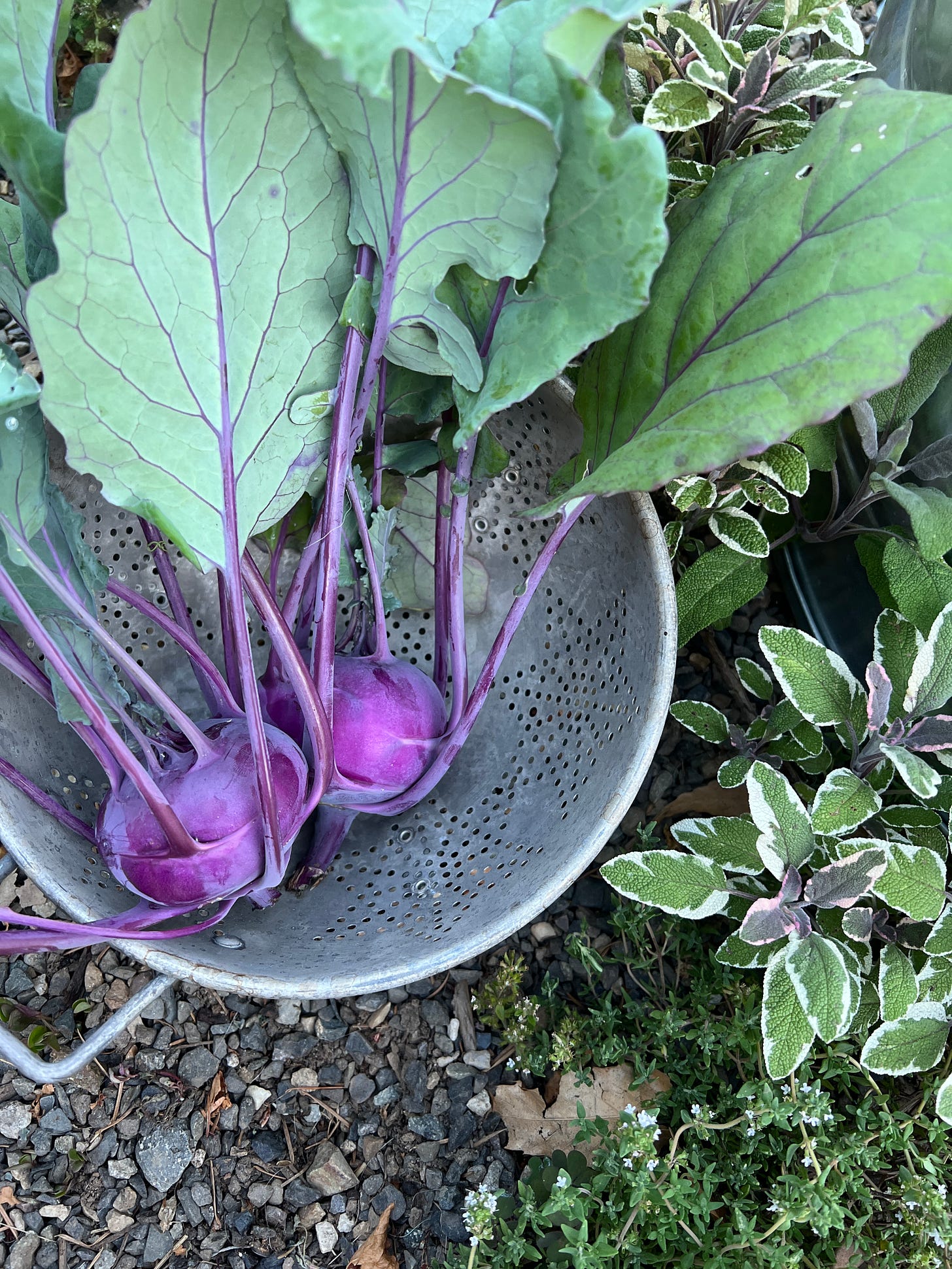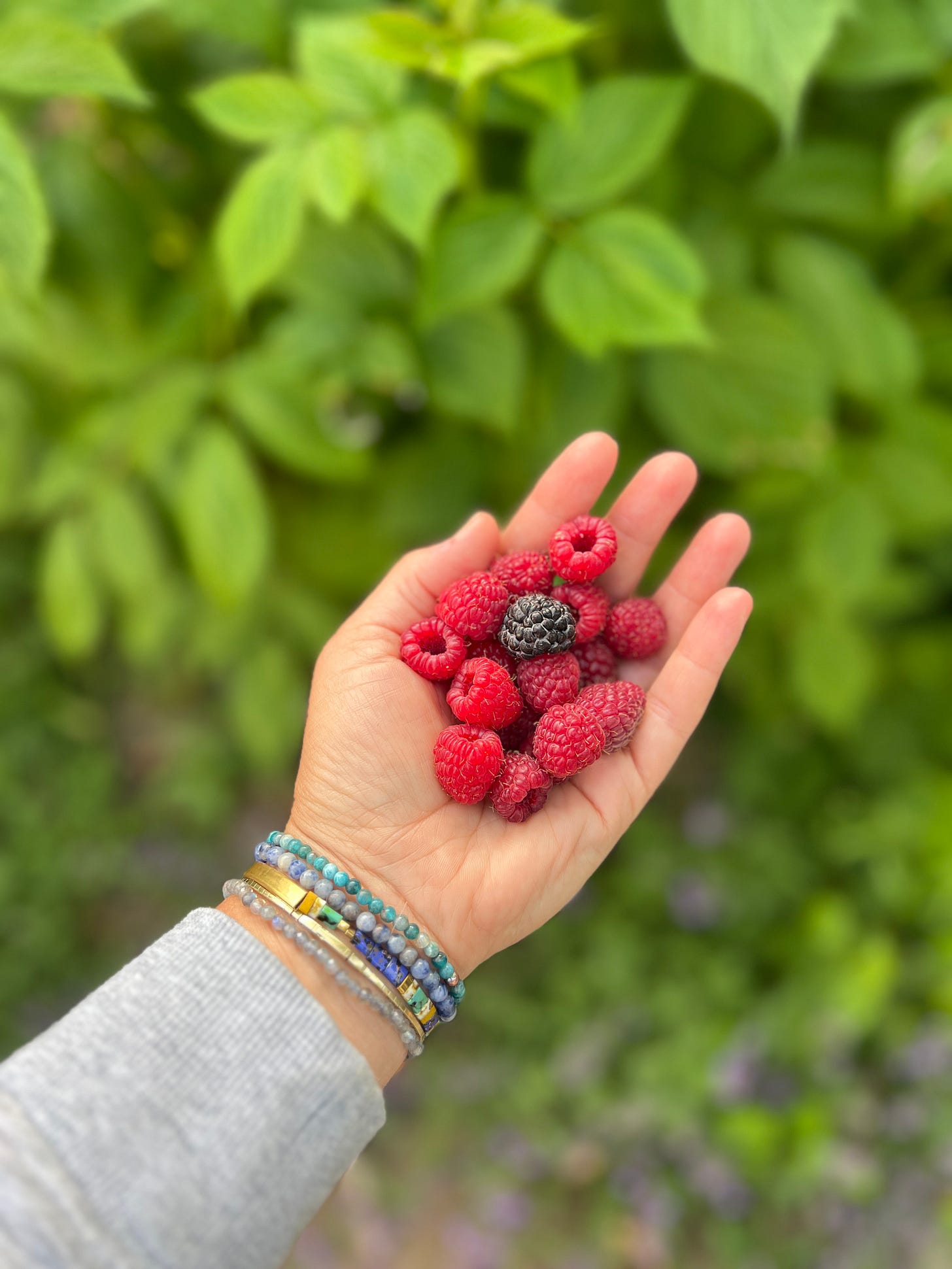Garden Inspiration from Santa Cruz
A visit to the seminal Alan Chadwick Garden on the UC Santa Cruz campus, plus veg variety finds from the Farmer's Market and a few Field Notes from my garden.
Hello from my little corner of the world! In the past month we have experienced days with 97 degree F highs, 48 degree F lows, and torrential downpours preceded by weeks without a drop of moisture. It has been a wild spring and I was worried to leave my garden for a few days while we took off on a little surf trip to California last week. We arrived home very late last night and I was thrilled to see how much my garden grew in just five days. I worry about my garden when I travel—but my borderline bonkers garden care instructions (complete with informational videos my husband thought were overkill and I thought were quite helpful) for our lovely house sitter seem to have worked!
The highlight of our trip was spending time in Santa Cruz, home to dear friends, a family-friendly surf break, 8-foot tall jade plants, buzzing farmer’s markets, and the inspiring 3-acre Alan Chadwick Garden. I first visited this garden about 25 years ago when I was an intern at Organic Gardening magazine and it was fun to step through the handmade gate and meander the pathways again!
Alan Chadwick was an English gardener and student of Rudolf Steiner credited with helping to popularize biodynamic and organic gardening principles in the United States in the 1960s and 1970s. He started this 3-acre organic production garden on the UC Santa Cruz campus and it is still actively gardened to this day.
From it’s earliest days, the gardeners here have grown and given away cut flowers to the community—and people can still come to the gardens on Tuesdays and Thursdays to harvest bouquets. We found huge rows of sweet peas and snap dragons and the apprentice we chatted with (an art major who likes to work in the garden for inspiration) offered up a pair of secateurs and said we could take some blossoms with us if we liked, even though it was a Friday.

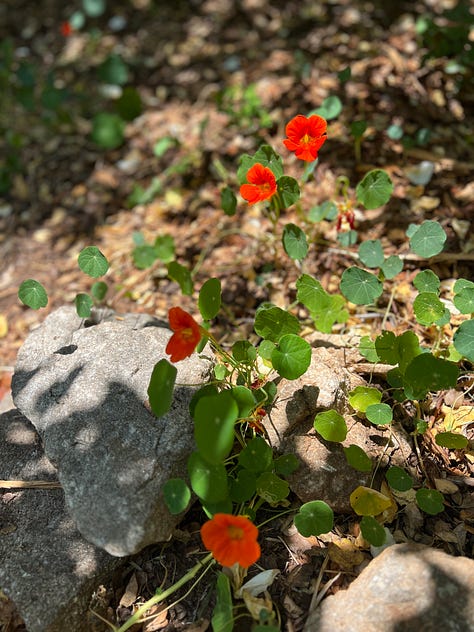
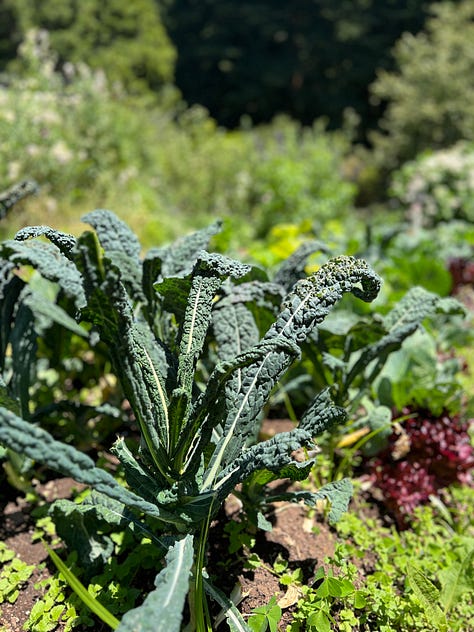
In our wanderings we saw the fruit orchard, which is home to over 100 varieties of apples, plus pears and citrus, huge rows of tomatoes, beehives, birds flitting in and out of beds, nasturtiums growing wild, and over 1000 pepper plants that had just been transplanted.
The original chalet office is pure magic, with herbs and flowers hung to dry in the rafters and rays of sunlight spilling in through the door. Perched on the side of a hill it’s part office, gathering space, library, seed processing station, and art project. Hand drawn signage, drawings, and quotes are tacked all over its wooden frame, musical instruments are set here and there, and a big table sits out on the covered deck. It would be a wonderful place to spend an afternoon flipping through books in the extensive library, saving seeds, or making plans. You can almost feel the energy of all the many, many young people who have learned to garden in this place—and gone on to start their own gardens—still swishing about.
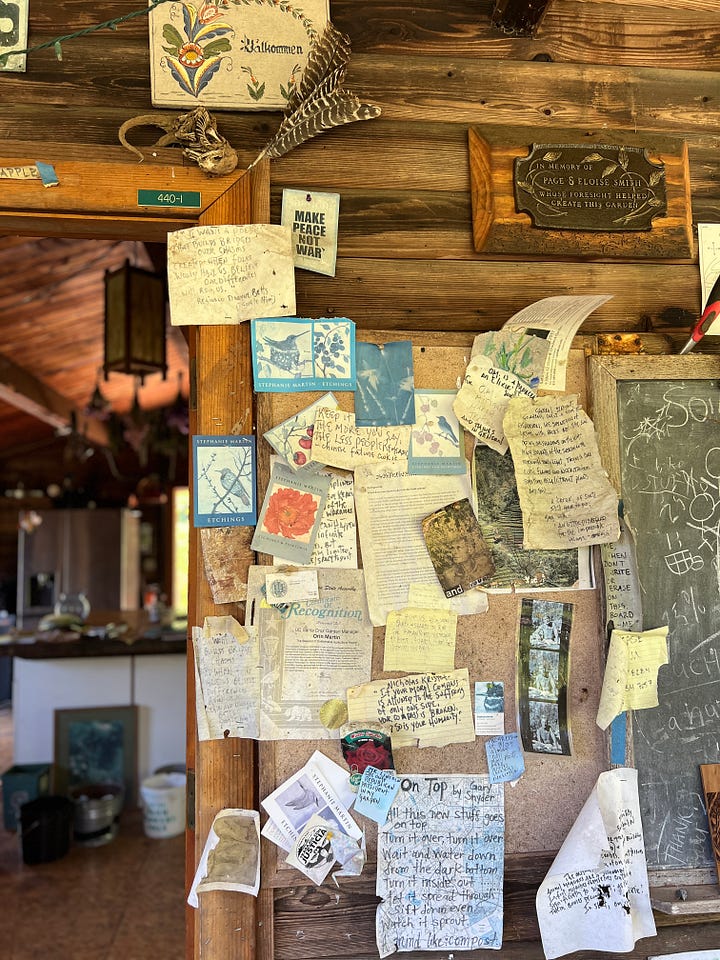
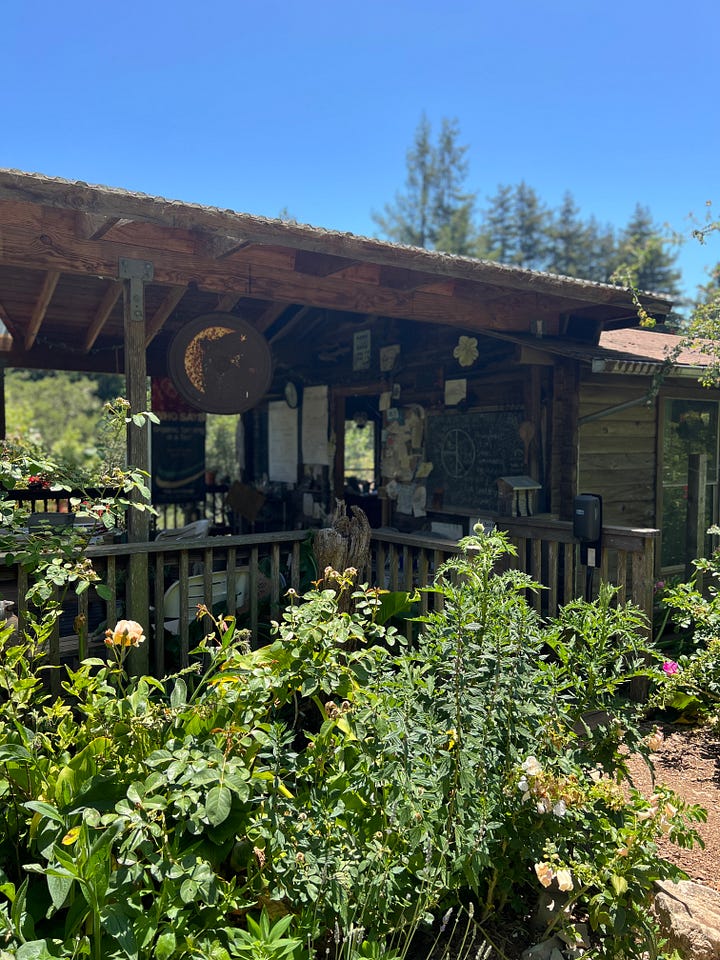
The Alan Chadwick Garden is open to the public daily from 8 am to 6 pm and worth a visit for anyone who loves edible plants!
One of my favorite ways to discover new varieties to try in my garden is to chat up farmers at a farmer’s market. No one is more aware of how important variety choice is than a small, organic market gardener and I’ve first tried some of my favorite varieties including ‘Sugar Ann’ snap peas and ‘Little Gem’ lettuce by purchasing them at a market. I stopped by the Westside Santa Cruz Market with a friend yesterday and made note of two varieties to keep in mind for this fall.
These ‘Denali’ cauliflower caught my eye for their pretty, uniform heads—but the farmer said he likes them because they grow well in variable weather. I’ve not had amazing luck with growing cauliflower in the spring, so I just might order some seed and give this variety a try in the fall.
The super frilly leaves of ‘Bare Necessities’ kale (available from Adaptive Seeds as ‘Bear Necessities’ kale) caught my eye! The leaves apparently can range from green to purple and resist the Swede midge—a pest that is not a problem in my garden but this one would be a good variety to try if it’s an issue in yours. Either way, I love the look of the leaves and am adding it to my list!
My little backyard veggie garden sits in a small rectangular plot just outside our dining nook window. When we first purchased our house the area was paved in asphalt, which we removed because it was hideous and directed water directly into our basement. Since the area also houses a decommissioned heating oil tank, we chose to not install in-ground raised beds and instead put in 3 large galvanized horse troughs and a few wine barrels.
This spring one of the wine barrels fell apart, so we took the opportunity to move them aside and add in three new (slightly smaller) troughs and nearly doubling the planting area of the garden! I have been enamored of the hog wire trellis trend but could not fit the 16’ panels in our vehicle. We had a few 8’ concrete reinforcing wire panels on hand, so with a few zip ties and a step ladder we put together some slightly wonky arches that look much better now that they are adorned with climbing squash and pole beans.
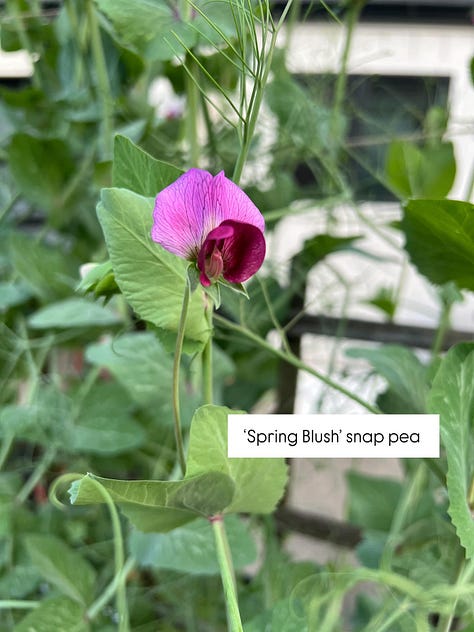


In the new troughs I planted ‘Sugar Magnolia’, ‘Wando’ and ‘Spring Blush’ peas in late April, which is nearly a month late in my area. Luckily I chose three varieties that survived our May heat wave with only a few crispy leaves and they are just starting to put out pods now.
To soften up the edges of the troughs, I am growing woody herbs, including a few types of sage, French, English and lemon thyme, tarragon and some German camomile.
My favorite thing I’ve tried this year (so far!) is kohlrabi. It is delicious and looks like a UFO when it’s growing. I also planted some celery, which should be ready to eat in a few weeks! A huge row of ‘Heritage’, ‘Fall Gold’, ‘Tulameen’ and black cap raspberries ramble along the chain link fence that divides our yard from our neighbor’s.
Before we left on vacation I filled in some bare spots in the garden with some lettuce, Tulsi basil, and ‘Lettuce Leaf’ basil seedlings that I started about three weeks ago in my cold frame. I also planted two rows of bush beans where the kohlrabi was and potted up some basil seedlings that I’m keeping in the cold frame. I’m curious to see if the basil that’s snugged up in the cold frame (with the lid cracked wide open) or the garden do better!
I am thrilled you are here! If you’d like to get future issues of The Garden Dish, please subscribe. It’s a wonderful small (but growing!) community of people who love to cultivate and tend the world around them and I am thankful you are here. And please do share the newsletter with anyone you think might also enjoy it :)









